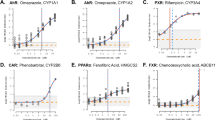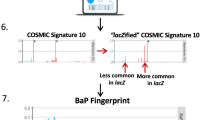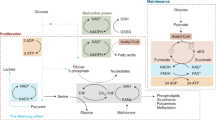Abstract
THE adverse biological effects of most carcinogens and/or mutagens are dependent on the formation of electrophilic intermediates which react with nucleophilic groups in cellular macromolecules. Inclusion of a metabolic activation system in various assays enables the detection of mutagenic activity for carcinogens and/or mutagens which require such metabolic activation. In mutagenesis assays, using mammalian cells, two metabolic activation systems have been used: cell-mediated mutagenesis (CMM), in which cells are co-cultured with metabolically competent, but lethally irradiated, cells (feeder layer)1,2, and microsome–mediated mutagenesis (MMM), in which cells are treated with chemicals in the presence of a microsomal fraction from rodent livers and an NAPDH–generating system3–5. The present study was carried out in order to investigate whether direct or proximate contact between target cells and such mediators of metabolism is necessary for the induction of mutagenesis. The results suggest that such contact is essential in both cell- and microsome-mediated mutagenesis of mammalian cells and, possibly, also in bacterial systems.
This is a preview of subscription content, access via your institution
Access options
Subscribe to this journal
Receive 51 print issues and online access
$199.00 per year
only $3.90 per issue
Buy this article
- Purchase on Springer Link
- Instant access to full article PDF
Prices may be subject to local taxes which are calculated during checkout
Similar content being viewed by others
References
Huberman, E. & Sachs, L. Int. J. Cancer 13, 326–333 (1974).
Newbold, R. F., Wigley, C. B., Thompson, M. H. & Brookes, P. Mutat. Res. 43, 101–116 (1977).
Umeda, M. & Saito, M. Mutat. Res. 30, 249–254 (1975).
Krahn, D. & Heidelberger, C. Mutat. Res. 46, 27–44 (1977).
Kuroki, T., Drevon, C. & Montesano, R. Cancer Res. 37, 1044–1050 (1977).
Huberman, E., Sachs, L., Yang, S. K. & Gelboin, H. V. Proc. natn. Acad. Sci. U.S.A. 73, 607–611 (1976).
Newbold, R. F. & Brookes, P. Nature 261, 52–54 (1976).
Wood, A. W. et al. Cancer Res. 36, 3358–3366 (1976).
Malaveille, C., Kuroki, T., Sims, P., Grover, P. L. & Bartsch, H. Mutat. Res. 44, 313–326 (1977).
Lawley, P. D. & Thatcher, C. J. Biochem. J. 116, 693–707 (1970).
Bertram, J. S. & Heidelberger, C. Cancer Res. 34, 526–537 (1974).
Glatt, H. R. & Oesch, F. Archs Toxicol. (in the press).
Author information
Authors and Affiliations
Rights and permissions
About this article
Cite this article
KUROKI, T., DREVON, C. Direct or proximate contact between cells and metabolic activation systems is required for mutagenesis. Nature 271, 368–370 (1978). https://doi.org/10.1038/271368a0
Received:
Accepted:
Published:
Issue Date:
DOI: https://doi.org/10.1038/271368a0
This article is cited by
-
Species variation in bladder cell and liver cell activation of acetylaminofluorene
Cell Biology and Toxicology (1987)
-
Methods for analysis of the mutagenicity of indirect mutagens/carcinogens in eukaryotic cells
Human Genetics (1980)
-
Culture of adult rat lung cells: Benzo(a)pyrene metabolism and mutagenesis
In Vitro (1979)
-
Cell specificity in metabolic activation of aflatoxin B1 and benzo(a)pyrene to mutagens for mammalian cells
Nature (1978)
Comments
By submitting a comment you agree to abide by our Terms and Community Guidelines. If you find something abusive or that does not comply with our terms or guidelines please flag it as inappropriate.



